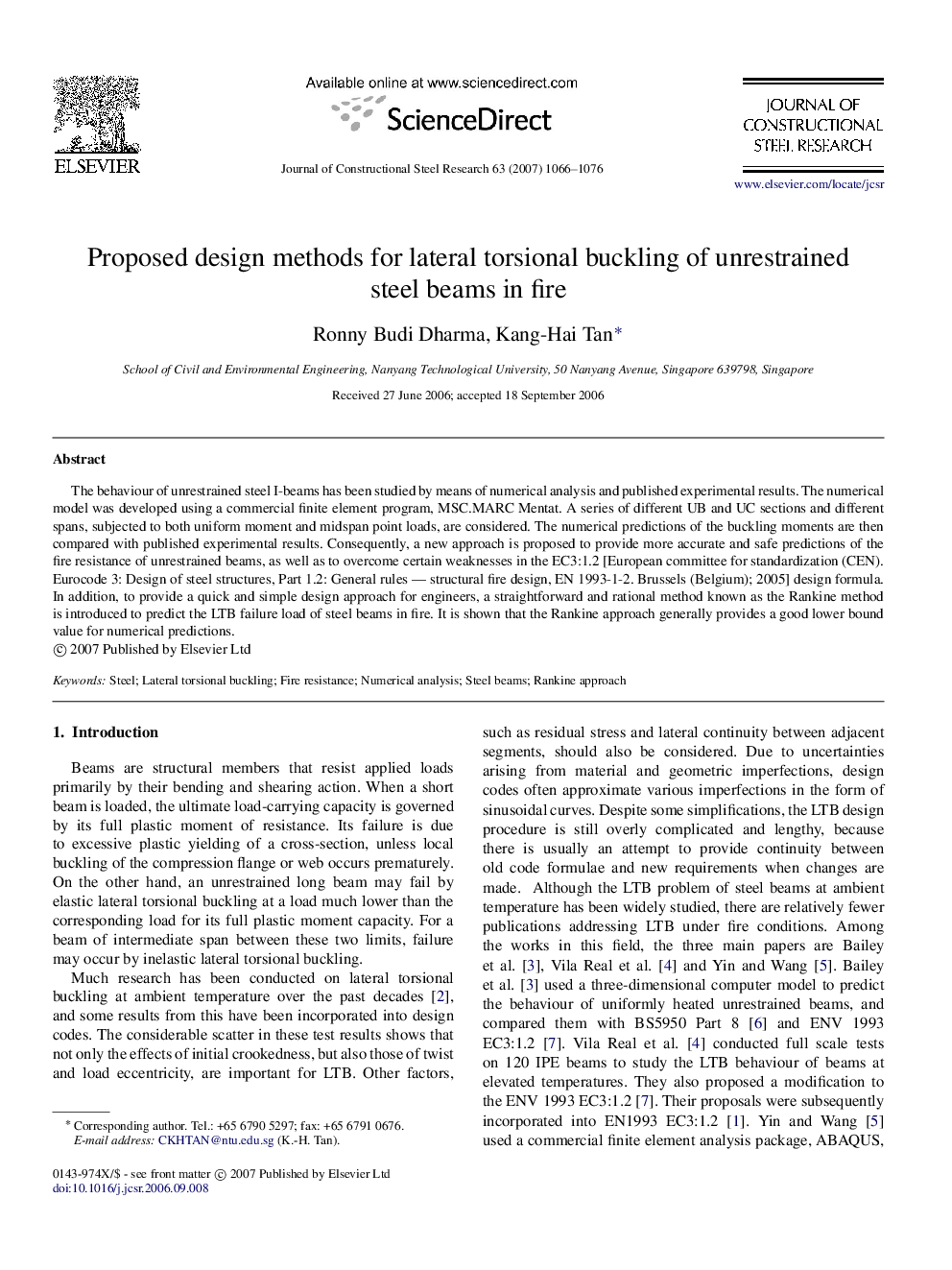| Article ID | Journal | Published Year | Pages | File Type |
|---|---|---|---|---|
| 286091 | Journal of Constructional Steel Research | 2007 | 11 Pages |
The behaviour of unrestrained steel I-beams has been studied by means of numerical analysis and published experimental results. The numerical model was developed using a commercial finite element program, MSC.MARC Mentat. A series of different UB and UC sections and different spans, subjected to both uniform moment and midspan point loads, are considered. The numerical predictions of the buckling moments are then compared with published experimental results. Consequently, a new approach is proposed to provide more accurate and safe predictions of the fire resistance of unrestrained beams, as well as to overcome certain weaknesses in the EC3:1.2 [European committee for standardization (CEN). Eurocode 3: Design of steel structures, Part 1.2: General rules — structural fire design, EN 1993-1-2. Brussels (Belgium); 2005] design formula. In addition, to provide a quick and simple design approach for engineers, a straightforward and rational method known as the Rankine method is introduced to predict the LTB failure load of steel beams in fire. It is shown that the Rankine approach generally provides a good lower bound value for numerical predictions.
